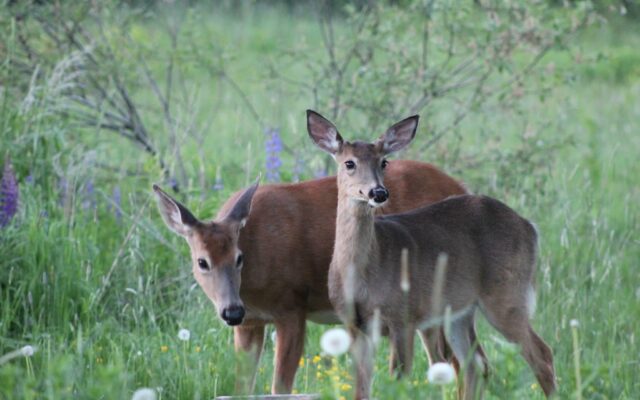
Maine deer harvest expected to be lower than last year’s record high
By Julie Harris, Bangor Daily News Staff
Maine’s deer biologist said Monday he expects the harvest to be less than last year’s all-time high, but more than the 10-year average of 29,000.
Maine logged a record number of deer killed last year of 43,787. This year, state deer biologist Nathan Bieber expects the total to be in the vicinity of 37,000 to 37,500.
That puts this year more in line with 2021 and 2020, which were 38,947 and 33,159, respectively, according to the Maine Department of Inland Fisheries and Wildlife annual harvest reports.
The number of deer killed has about doubled what it was in 2011, Bieber said. A total of 18,839 deer were registered in 2011.
It’s too early for final numbers of deer killed this year because muzzleloader season doesn’t end until next week. But the continued use of the antlerless deer permit system the state switched to last year, weather and other factors could affect the bottom line, Bieber said.
“The second Saturday [of hunting season] harvest was higher than opening Saturday. I’ve never seen that before,” he said.
The first Saturday of hunting season is open to Maine residents only. The season opens to everyone on the Monday after it.
An 80-degree Fahrenheit opening day during which many people didn’t hunt, a huge acorn crop that kept the deer from wandering too far for food, the first year of the two-day youth hunt and rain are all factors that could affect the year’s total kill, he said.
Final numbers will not be available for a couple of months, he said. Any health trends will not be available until February because the data recorded on paper has to be entered into the computer system and analyzed, he said.
Biologists took samples from approximately 20 percent of the deer killed, primarily monitoring for chronic wasting disease, Bieber said.
There were no obvious health issues, just occasional infections and injuries inflicted by predators, as would be expected in the population, he said.
There was some localized testing as well. Deer killed in Unity and Fairfield were tested for per- and polyfluoroalkyl substances or PFAS. The toxic substances were found in some deer taken in Fairfield two years ago, so the state continues to monitor that situation. The contamination came from sludge spread on fields where the deer eventually ate vegetation.
Deer are also being tested this year for COVID-19 through the U.S. Department of Agriculture’s Animal and Plant Health Inspection Service program as part of a national study to determine prevalence of the virus. The nasal swabs used were purchased with federal grant money.
The two-day youth hunt, although popular with young hunters even though it rained hard, was not as well received by some teachers. The first day of the hunt was on a Friday, which was supposed to be a school day for everyone. The MDIF&W plans to discuss this further with educators, Bieber said.
The state also is collecting data on acorns and deer hunter success rates. Connecticut has found a strong relationship between the success of hunters and the abundance of acorns. The more acorns, the lower the hunters’ success rates are, Bieber said, citing Connecticut’s research.
The most likely reason for that is deer don’t have to move around as much or as far away when acorns are plentiful as they would when the mast is less abundant and they need other food sources, he said.
The MDIF&W also is conducting a community science project in November and December, looking at the timing and length of the annual rutting or breeding season.
The north tends to be precisely timed and intense due to early and long winters, but the rut in areas south of Maine is longer and less intense, Bieber said. The new project will help biologists identify any trend changes.
Correction: An earlier version of this story incorrectly stated the region state biologist Nathan Bieber said has a longer rut. It is in states south of Maine.